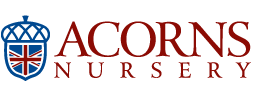Did you know that between the age of three and five, children have a particularly complex and sophisticated potential to acquire mathematical abilities?
Douglas Clement, director of the Institute for Early Learning and Literacy at the University of Denver , spent most of his career studying and advocating for the early introduction of mathematical concepts in children’s education. He demonstrated that doing so makes it easier for children to acquire vital abilities as grown-ups and favors their academic success.
In addition to its educational importance, basic mathematics also helps children to develop skills such as logical thinking and time and space orientation, which are necessary in solving everyday problems.
Basic mathematical notions in early education
By the age of two to three, children begin to compare objects and recognize their number in terms of “more”, “less” or “the same.” At three years old, children can count up to 5. From age five, they can already learn to count to 10, identify forms and do basic arithmetic.
Counting
Even before starting nursery, we can teach children to count by doing simple and fun activities. For example, counting toys, their fingers, family members, or pictures in a book.
At first, children learn to count by memorizing words and their sequence. That’s why it’s important to use comparisons between numbers, like “5 is more than 3” . Susan Levine, professor at the University of Chicago, explains: “Usually, children learn to count to 10 quickly, but this often bears no significance for them. If you tell them to bring three fish, they will bring you a pile.”
Measuring
Children aged two to three can make comparisons of the smaller / larger type. At this point, we can introduce measuring concepts by grouping toys by size. Later, at age four to five, we can introduce the notion of height by measuring the child on a wall or a door.
The notion of weight can be explained in the kitchen, whenever we involve children in the process of cooking a meal or preparing a cake, or by using dedicated teaching material.
Adding and subtracting
Before entering primary school, children can also learn basic concepts about adding and subtracting. In the classroom or at home, parents and educators can introduce simple arithmetic using familiar elements. It helps to start with a quantity that children already recognize, like two toys, after which one more is added. Then say loudly „three toys” and place the figure 3 next to the toys. Thus, you help them to link the number of toys with the visual representation.
Another way to do it is at snack time. For example, children will have in front of them a plate containing 5 apple slices. Ask them to count the slices and after eating a slice, tell them that only 4 slices are left and so on – now they’re subtracting.
Geometry
Educational toys in geometric shapes are an excellent way of introducing spatial thinking. After a while playing with shapes (cubes, triangles, circles), children can also be presented with other spatial concepts. Show them what is up, down, in front of, behind, what is a line or a corner and point out the shapes of different items from your daily routines, like when you cut sandwiches in the form of a triangle. According to Professor Douglas Clement, children need to translate their experiences also in mathematical terms, in order to fully understand the world around them.
The benefits of mathematics
Mathematics helps develop logical and critical thinking Mathematics is built on reasoning and is the basis of logic and order. When a student explains how he has reached a solution by describing the steps, he uses logical thinking. Early mathematics disciplines the child’s mind. This can be observed and also experienced through everyday activities. We can help children to think critically and formulate hypotheses by asking them open questions, such as “What do you think will happen if we hide 2 out of the 5 toys we have on the carpet?” Give them time to think, refrain from offering the correct answer and instead help them with other open questions in order to reach the right answer.
Mathematics offers solutions to daily problems. What time is it? How many grams of sugar are needed for a cake? How much does the toy cost? These are just a few examples where mathematics is present in everyday life. Any context in which children feel good can be used to teach them basic notions of mathematics. At home or at the playground, there are countless situations in which we can exercise counting, adding, subtracting or measuring objects that are part of the child’s universe. We don’t need a standard maths lesson to do simple arithmetic operations.
Mathematics is the pillar of our professional careers All jobs involve mathematics, whether they use basic concepts or complex operations. A high level of mathematical knowledge is a door-opener to well-paid jobs in science, technology and engineering. A study coordinated by Greg J. Duncan in 2007 shows that children that are introduced to mathematical notions at an early age are more likely to become educated adults that are successful in professional development. Once children understand how mathematics are applied in real contexts, it becomes a fascinating field that helps them solve problems and develop logical thinking.
The more we present mathematics in a positive way, the more children will become confident in themselves and in their ability to succeed.
